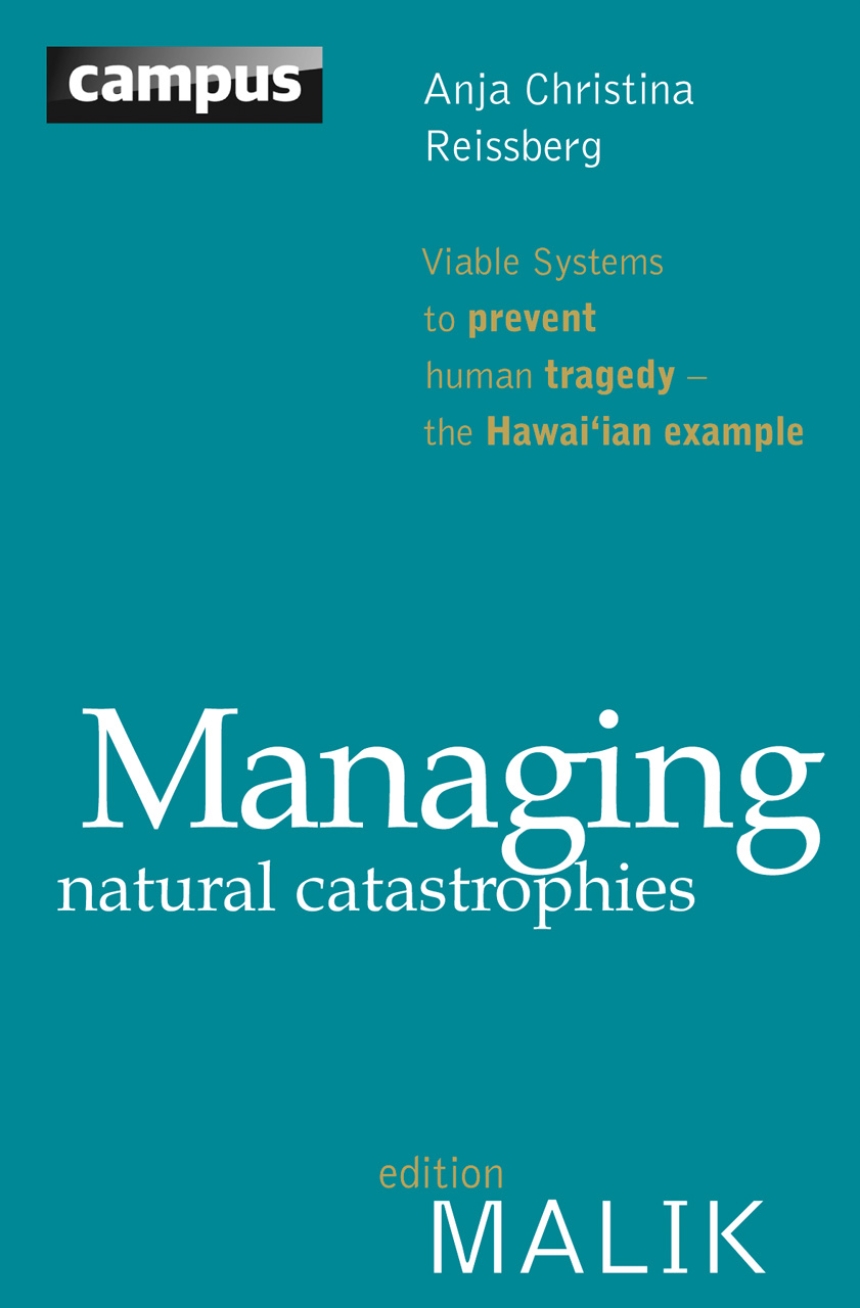Managing Natural Catastrophies
Viable Systems to Prevent Human Tragedy - the Hawai’ian Example
9783593396217
Distributed for Campus Verlag
Managing Natural Catastrophies
Viable Systems to Prevent Human Tragedy - the Hawai’ian Example
Natural disasters appear to be on the rise worldwide, their increasing frequency and far-reaching devastation demand the attention of society. But do natural disasters really occur more often than before? Globalization has led to more direct linkages to distant places than existed in the past. The rising interconnectedness and dependency within human systems increase in complexity while the nature of those connections gets more complicated and the number of system elements increases. Managing Natural Catastrophies argues that the key to finding a more effective response to natural disasters is to understand their many preventable causes.
288 pages | 77 halftones | 5 1/2 x 8 3/8 | © 2012
Earth Sciences: Environment
Economics and Business: Economics--Development, Growth, Planning
Table of Contents
German preface for editionMALIK
Introduction: Natural disasters in the light of management cybernetics
1. The Hawai’ian hurricane tale
1.1 Background on State of Hawai’i and O’ahu
1.2 Background on hurricanes
1.3 Hurricanes in Hawai’i and the risk of a future hit
1.4 Damage scenarios and vulnerability analysis for O’ahu
2. Keys to solutions of a complex disaster management world—the Viable System Model
2.1 The Viable System Model’s core concepts
2.2 Am I me? —On subjectivity and identity
2.3 The structure of the Viable System Model
2.4 What a heart needs to be whole—understanding VSM in depth
3. The Hawai’ian disaster management system—diagnosis and suggestions for redesign with the Viable System Model
3.1 Time—the vital factor to measure viability
3.2 Structural diagnosis of the Hawai’ian disaster management
3.3 Diagnosis and redesign of the Hurricane Hazard Management System processes
3.4 The HHMS’s viability requirements
3.5 VSM application Summary
4. Is the Viable System Model worth the effort?
4.1 System Science—its important role in the field of Geography
4.2 Insights for the field of hazard management research
5. Appendix: Other potential approaches inspiring future research
5.1 Potential redesign of the HHMS using Human Activity Systems (HAS)
5.2 Ackoff’s Idealized Design
5.3 The Analytical Hierarchy Process by Saaty
5.4 Designing a cybernetically sound infrastructure system—Critical Path Analysis
5.5 Further research potential
List of Abbreviations
References
Internet sites
Presentations and interviews
Events and conferences
Grey literature
Newspaper Articles
E-mail contacts
Glossary
Glossary of Beer’s cybernetic language
Glossary of rules for the Viable System
Glossary of FEMA’s acronyms
Index
Introduction: Natural disasters in the light of management cybernetics
1. The Hawai’ian hurricane tale
1.1 Background on State of Hawai’i and O’ahu
1.2 Background on hurricanes
1.3 Hurricanes in Hawai’i and the risk of a future hit
1.4 Damage scenarios and vulnerability analysis for O’ahu
2. Keys to solutions of a complex disaster management world—the Viable System Model
2.1 The Viable System Model’s core concepts
2.2 Am I me? —On subjectivity and identity
2.3 The structure of the Viable System Model
2.4 What a heart needs to be whole—understanding VSM in depth
3. The Hawai’ian disaster management system—diagnosis and suggestions for redesign with the Viable System Model
3.1 Time—the vital factor to measure viability
3.2 Structural diagnosis of the Hawai’ian disaster management
3.3 Diagnosis and redesign of the Hurricane Hazard Management System processes
3.4 The HHMS’s viability requirements
3.5 VSM application Summary
4. Is the Viable System Model worth the effort?
4.1 System Science—its important role in the field of Geography
4.2 Insights for the field of hazard management research
5. Appendix: Other potential approaches inspiring future research
5.1 Potential redesign of the HHMS using Human Activity Systems (HAS)
5.2 Ackoff’s Idealized Design
5.3 The Analytical Hierarchy Process by Saaty
5.4 Designing a cybernetically sound infrastructure system—Critical Path Analysis
5.5 Further research potential
List of Abbreviations
References
Internet sites
Presentations and interviews
Events and conferences
Grey literature
Newspaper Articles
E-mail contacts
Glossary
Glossary of Beer’s cybernetic language
Glossary of rules for the Viable System
Glossary of FEMA’s acronyms
Index

